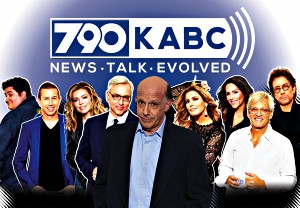
Drew Hayes got his first job in radio as a teenage fill-in traffic reporter on WMCA in New York City back in the ‘70s. He’d listen to the helicopter reporters on WOR and WCBS and scribble down his report. He was filling in for Tommy Traffic and his name…. Peter Parkway, of course.
His first PD job was at the signal-challenged, financially failing WPLP in Tampa (as in W-Please Listen, PLEASE). Hayes went on to program stations in LA, Chicago, and Cincinnati, and at the ESPN Radio Network, in All-News, Talk, News-Talk, and Sports. Today Hayes is leading the great team at KABC in Los Angeles and he’ll be in the May 7 issue of Radio Ink Magazine. He’s been voted one of radio’s best programmers.
Radio Ink: Tell us exactly what you are responsible for.
Drew Hayes: I am responsible for building ratings and branding that generates revenue. The most important part of my job is managing — the talent (on-air and behind the scenes) and the content. I am lucky to work under VP/Market Manager Dawn Girocco, and for Cumulus, where we are empowered to create. We have a great, collaborative environment and the resources to do our best work.
Radio Ink: What is your biggest station accomplishment (outside of ratings) over the past year?
Drew Hayes: Continuing to evolve the “KABC News-Talk-Evolved” station brand. KABC is loaded with high-profile Southern California personalities who break the mold of traditional Talk radio. They are entertaining, informed, and high-energy. What they are not is ideological. This is a step forward for the format. We have built a radio station that talks about the news of the day from a variety of perspectives that opens the “big tent” to listeners of all interests.
Radio Ink: Who do you consider your mentors in the radio business, and why?
Drew Hayes: My dad, Richard Hayes. He was a radio personality dating back to the last days of the network variety shows — the Arthur Godfrey Show on the CBS Radio Network. He was also a Talk show host on WMCA, WWDB, and WCAU. I learned to screen phone calls with him on the other side of the glass.
Also, Michael Spears. He brought me to the bankrupt Talk station he owned, WPLP, then to Urban monster K104 where he made me morning news anchor and News Director — working with the brilliant Tom Joyner. Michael was a grand promoter and packager, and always pushed to grab the listener’s attention — boldly and loudly. And he always said to do your thinking ahead of time — then you’re prepared to react.
Radio Ink: What do PDs have to do this year and over the next five years to have a successful career in programming that leads to their advancement?
Drew Hayes: Follow the money. Successful programming is the dynamic mix of art and commerce. Don’t let the revenue upside — or the cost — be the only measure, but always be aware of VALUE… it will help you make better decisions. As part of the ideation process, I always try to reduce a decision to dollars and cents — cost versus the dollar return.
Radio Ink: What is radio’s biggest programming challenge moving forward?
Drew Hayes: Enlightening the naysayers. Radio is the “American megaphone.” We need to be proud of our far-beyond-any-other-medium reach, and stop being modest. Wanna move product? Radio. Wanna influence behavior? Radio. Wanna hear about some high-impact breaking news as it happens? Radio. We have to constantly evolve to meet the tastes, expectations, and needs of our target audiences. That means evolving our mindset and applying our expertise to delivering content in an array of distribution platforms. But it all starts with the radio.
The challenge is also to evolve. Today, there is a premium on authenticity. With all the talk about “energizing” AM radio, it might be worth seeking ways to enhance the authenticity quotient.
A way to do that might be to broaden the safe harbor parameters and hours. If the rules about language and content were softened for AM stations that are more adult-based, to enable them to be more competitive with the landscape of what consumers are used to, it would open the band to a broader, younger audience. Clearly, we must maintain community standards, but broadcasters have always been very responsible and accountable. Having the ability to program to a more adult audience that is already making those choices could be just the cost-free road that would yield more listeners.
Radio Ink: Why are consumers listening to Pandora and Spotify and not radio?
Drew Hayes: I’d take issue with the framing of the question. There are a lot of choices, and audio consumers avail themselves of the variety of sources for their listening. I’d say listeners make choices based on their needs, and radio — especially spoken word — dominates, because it is immediate and interactive, providing breaking news and context, and personalities listeners know and trust, in real time.
Reach out to Drew on congratulate him on being one of radio’s best PD’s in the business at [email protected]
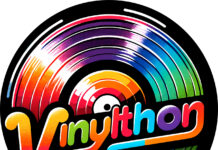
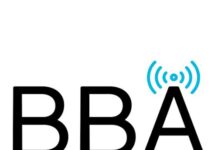
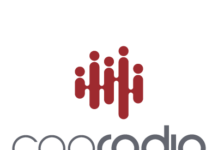
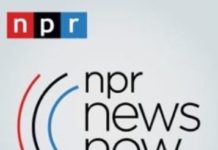


Is this some kind of joke? Hayes was the first PD in decades to take KABC down to a 2.0 ARB rating in 1998, under Disney. He left and went back to Chicago, where he utterly destroyed CBS’ 105.9 FM (which is now again successful, simulcasting WBBM 780 Newsradio). Hayes bounced back to KABC a few years ago; within the past week, the March 2018 numbers were released, with KABC registering a blistering 0.5 –that seems to be the line of resistance that the once-mighty KABC cannot rise above. Who paid whom to come up with this piece of trash?